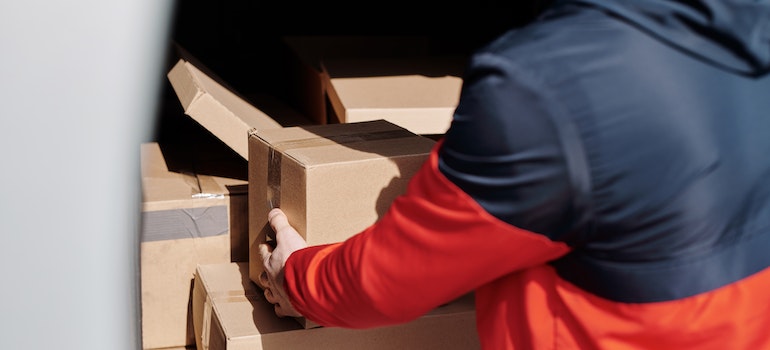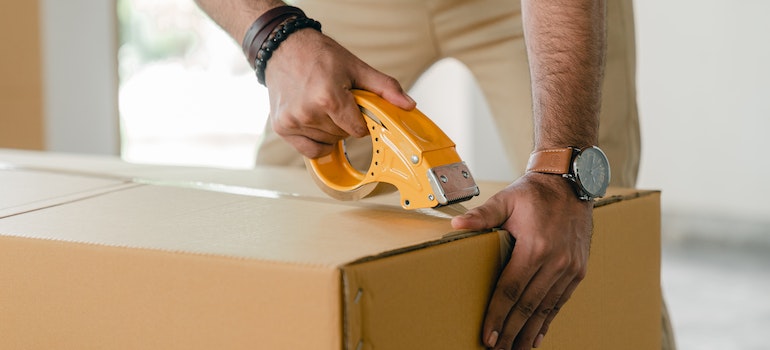In the intricate choreography of relocating from one place to another, the significance of mastering proper loading and unloading techniques cannot be overstated. Whether you’re moving across town or across the country, the seamless transition of your cherished belongings hinges on the precision with which you load and unload them. These techniques not only ensure the safety of your possessions but also play a pivotal role in minimizing stress and potential mishaps during this major life event. Verified Movers will go into the art of loading and unloading, equipping you with invaluable insights to make your move a smoother and more efficient journey.
Preparing for Loading
Preparing for loading is a crucial phase in the moving process, setting the stage for a successful transition to your new home. To ensure a smooth loading experience, meticulous planning and organization are paramount. Begin by creating a comprehensive inventory of your belongings, categorizing items by fragility and size. This inventory will serve as your roadmap, helping you decide the optimal placement of items in the moving truck. Next, gather all the necessary packing supplies, such as cardboard boxes, tape, bubble wrap, and packing paper, ensuring you have enough to secure your possessions effectively.

Additionally, disassemble any furniture or bulky items that can be broken down to save space and make them easier to load. Finally, designate a designated loading area, keeping it clear of obstacles and ensuring easy access for the moving team. By following these steps, you’ll be well-prepared to tackle the loading process with efficiency and ease and keep your valuables safe, including important documents.
Effective Loading Strategies
Effective loading strategies are the key to optimizing space, ensuring the safety of your belongings, and maintaining the balance of your moving truck. To make the most of the available space, consider techniques such as stacking. Place heavier and sturdier items at the bottom, creating a solid base, and then stack lighter or more delicate items on top. Secure your items with straps, ropes, or bungee cords to prevent shifting during transit. Distributing weight evenly is crucial for safe and stable transportation, so be mindful of balance. Place heavier items toward the front and bottom of the truck, evenly distributing weight from side to side.
Moreover, utilize the vertical space by filling gaps with soft items like mattresses, pillows, and cushions. Don’t forget to use furniture pads or blankets to protect your possessions from scratches and damage. When loading fragile items like glassware or electronics, wrap them individually in bubble wrap or packing paper and place them in sturdy boxes, labeling them as fragile. By implementing these loading strategies, you’ll not only maximize space but also ensure the safety of your items throughout the move.
Tools and Equipment For Good Loading and Unloading Techniques
Efficient loading relies on having the right tools and equipment at your disposal to simplify the process and ensure the safety of your belongings. Here’s a list of essential tools and equipment:
- Furniture Dolly. A sturdy furniture dolly with wheels is indispensable for moving heavy furniture items like sofas, refrigerators, and dressers.
- Hand Truck. Hand trucks, also known as appliance dollies, are ideal for transporting appliances and boxes. They come in various types, including those with stair-climbing capabilities.
- Moving Straps. These straps, like forearm forklifts or lifting straps, provide better grip and help distribute weight when lifting heavy objects, reducing the risk of injury.
- Packing Blankets. Also known as moving blankets, these thick, padded blankets protect furniture and fragile items from scratches and damage during transport.
- Rope and Tie-Downs. Strong ropes and tie-downs are essential for securing items in the moving truck, preventing them from shifting during transit.
- Packing Supplies. Stock up on packing supplies like boxes, packing tape, bubble wrap, packing paper, and markers for labeling.
- Tools Kit. A basic toolkit with screwdrivers, pliers, and wrenches can be handy for disassembling and reassembling furniture.
- Furniture Sliders. These sliders or gliders make it easier to move heavy furniture across floors without causing damage.
- Ramp. If you’re dealing with heavy items, a loading ramp can help you wheel them into the moving truck with less effort.

You can obtain these tools and equipment from various sources, including local hardware stores, moving supply companies, or even by renting them from truck rental agencies or moving companies. Additionally, consider seeking recommendations from friends or family who have recently moved, as they may have some of these tools on hand. Properly equipped, you’ll be well-prepared to tackle the loading process efficiently and safely.
Unloading Best Practices
Unloading your belongings at your new location is the final and critical step in a successful move. To ensure a safe and efficient unloading process, here are some best practices:
- Plan Carefully. Ensure a clear path from the truck to your home and assign roles if you have helpers.
- Prioritize Safety. Wear proper gear, like gloves and closed-toe shoes, and use controlled movements to prevent injuries.
- Unload Heavies First. Start with the heaviest items, placing them in their designated spots.
- Proper Lifting. Bend your knees, not your back, when lifting. Keep items close to your body.
- Take Breaks. Avoid overexertion by taking regular breaks to rest and rehydrate.
- Use Tools. If available, use a hand truck or furniture dolly for heavy items.
- Handle Fragile Items with Care. Unpack fragile items slowly and place them in a safe area.
- Inspect for Damage. Check for any damage during unloading and document it for insurance claims.
- Dispose of Packing Materials. Responsibly dispose of packing materials and recycle cardboard boxes.
By adhering to these concise guidelines, you’ll ensure a safe and efficient unloading process, safeguarding your belongings and well-being during your move.
Common Loading and Unloading Mistakes
Certainly, here are the common loading and unloading errors, along with their consequences and prevention methods:
- Overloading. Overfilling the truck beyond its capacity can lead to increased risk of damage, accidents, and fines. To prevent this, stick to the truck’s weight limit, prioritize essential items, and consider multiple trips if necessary.
- Improper Packing. Inadequate padding and careless stacking of fragile items can result in breakage and damage during transport. Use proper packing materials, wrap fragile items, and secure them in sturdy boxes to prevent this.
- Neglecting Straps and Tie-Downs. Failure to secure items in the truck can cause items to shift during transit, leading to damage and safety hazards. To prevent this, use straps, ropes, or tie-downs to secure items tightly.
- Lack of Planning. Not having a loading/unloading plan can lead to chaos, wasted time, and potential accidents. Create a detailed plan, assign roles, and stick to it to prevent this.
- Ignoring Weight Distribution. Unevenly distributing weight in the truck can result in an imbalanced load, difficulty driving, and an increased risk of accidents. To prevent this, place heavy items on the bottom and distribute weight evenly.
- Ignoring Safety Precautions. Not using proper safety gear or techniques can lead to personal injuries and damaged items. To prevent this, wear safety gear, use proper lifting techniques, and take breaks.
- Rushing. Hurrying through loading/unloading can lead to accidents, damaged items, and overlooked safety measures. To prevent this, prioritize safety and take your time.
- Not Checking for Damage. Neglecting to inspect items for damage during unloading can make insurance claims more difficult. To prevent this, thoroughly inspect items and document any damage.
By being aware of these common issues and taking proactive steps to prevent them, you can ensure a smoother and safer loading and unloading experience, ultimately preserving the condition of your belongings and the well-being of those involved in the move.
Safety Tips For Loading and Unloading Techniques
Safety is paramount when applying loading and unloading techniques, ensuring the well-being of yourself, and your helpers, and the preservation of your belongings. First and foremost, prioritize personal safety by donning appropriate gear such as gloves, closed-toe shoes, and back-supporting belts to minimize the risk of injuries. Use proper lifting techniques, emphasizing leg use over your back, and take regular breaks, especially on hot days, to prevent overexertion. Effective communication within your moving team is essential to coordinate movements and prevent accidents.

Additionally, secure your belongings by packing them carefully and using straps, ropes, or tie-downs to fasten them securely within the moving truck. Employ furniture pads or blankets to shield items from potential scratches or damage and ensure an even distribution of weight, placing heavier items at the bottom to maintain balance. Clear paths of obstacles, use ramps and hand trucks or dollies to move heavy items safely and keep children and pets at a distance from the loading/unloading area. It’s also imperative to verify the moving truck’s condition, drive cautiously, and be prepared for potential emergencies with a first-aid kit and knowledge of the nearest medical facility. Be mindful of weather conditions, adapting your safety measures accordingly to ensure a smooth and secure moving experience.
Mastering Loading and Unloading Techniques for a Smooth Move
In conclusion, mastering the loading and unloading techniques discussed in this blog is paramount for ensuring a seamless and safe move. By meticulously planning, using the right tools, and following best practices, you can optimize space in your moving truck, safeguard your belongings, and prevent potential injuries. Remember to prioritize personal safety, secure your items properly, and maintain a clear and organized loading/unloading environment.
As you embark on your moving journey, apply these techniques diligently. Whether you’re relocating locally or across the country, these strategies will not only streamline the process but also enhance the overall experience. By doing so, you’ll significantly reduce the stress associated with moving and increase the likelihood of a successful and worry-free transition to your new home. Safe travels and happy moving!




